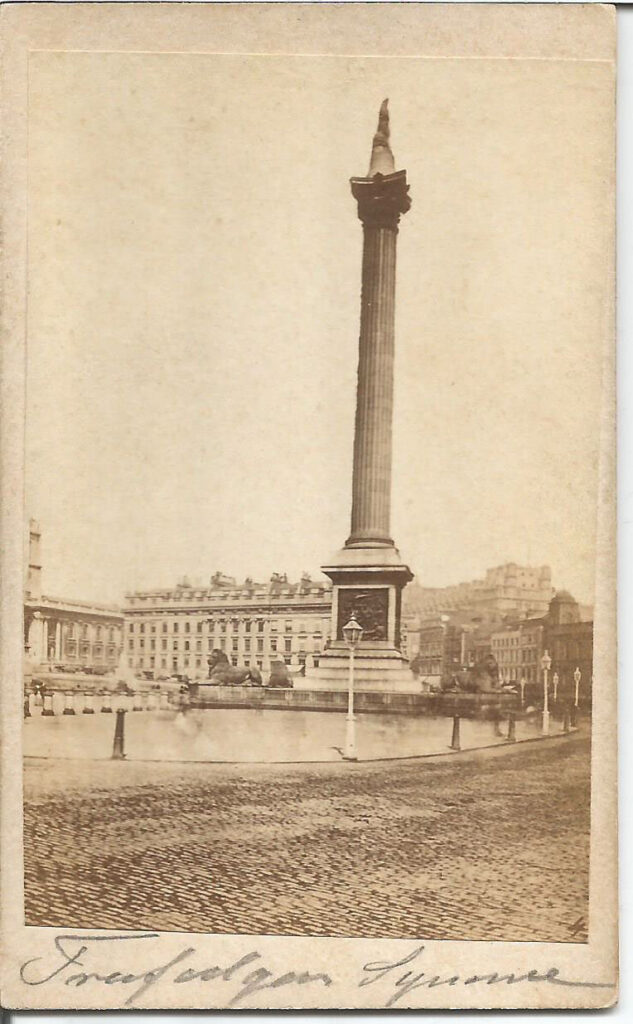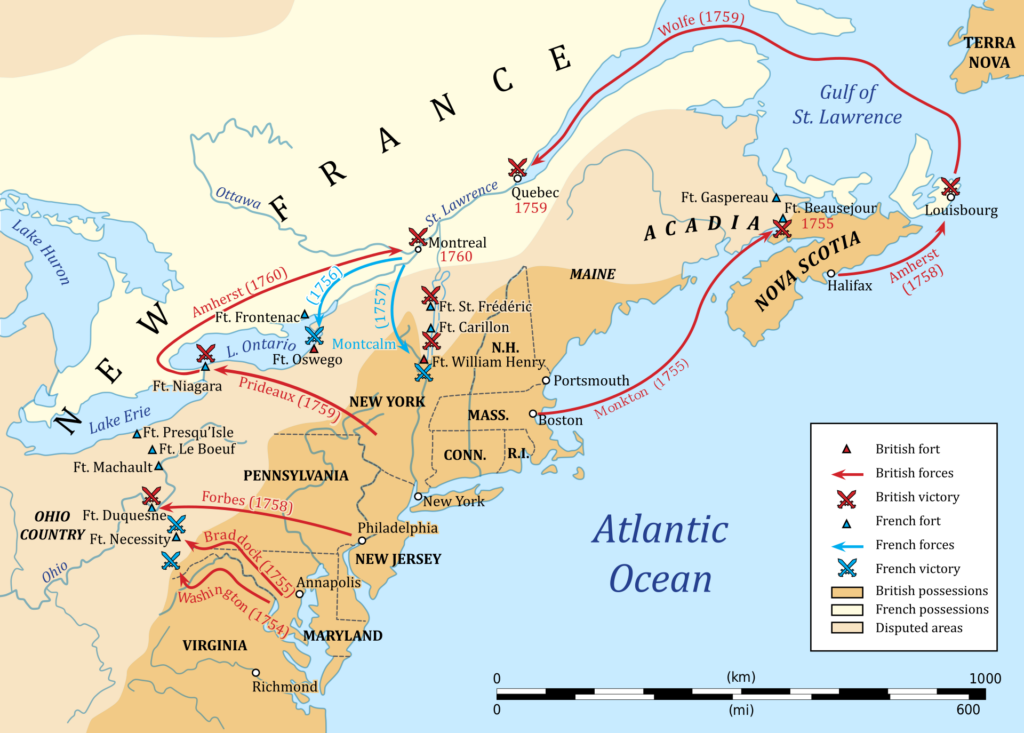Section #1 - America’s years as a British Colony end with The Revolutionary War
Chapter 5: Britain and France Begin Their Battles For Global Hegemony
1701-1714
The War Of Spanish Succession Spills Over To North America

at Quebec
Going all the way back to the 1066AD invasion of England by William the Conqueror of Normandy, Britain and France have struggled for land and power.
Another chapter in this conflict materialized on November 1, 1700, when the Spanish throne is left vacant by the death of the mentally and physically handicapped King Charles II — “the Bewitched” – whose 40-year rule incapacitates the country. In his will Charles names Philip of Anjou, grandson of Louis XIV, as his successor, which threatens to unite Spain, the Hapsburg empire and France under one crown.
At this point, the British, ruled by the Protestant Queen Anne, decide to go to war to prevent France from expanding its power in Europe. The War of Spanish Succession lasts from 1701 to 1714, and ends with a major victory for the English over Louis XIV.
One phase of this conflict is fought in North America and known as Queen Anne’s War. It leaves the Spanish missions in Florida weakened and costs the French its territory in Newfoundland, Acadia and Hudson Bay.
1756-1763
The French & Indian Wars End With Rule Britannia
But the battle over succession in Spain proves only a warm-up for the Seven Year’s War, waged 1756 to 1763.
It becomes the world’s “first true global war” eventually pitting France, Austria, Spain, Sweden and Saxony against an alliance of England, Prussia, Portugal and Russia. It is fought on land and sea, with human casualties estimated at well over one million men, and fearful financial losses on all sides.
The American theater is christened the French & Indian War, with most of the action centered on control over trade-route forts along the Canadian border.
As the war begins, the French have 75,000 settlers living in North America vs. 1.5 million British colonists. Their military consist of roughly 10,000 regular army forces, complemented by their tribal partners, the Algonquins and the Mohawks. The British muster roughly 40,000 men between their regulars and militia volunteers from their colonies, including one George Washington of Virginia. Their Indian allies are the Iroquois, historical foes of the Algonquin.
Despite these odds, the war begins badly for England. General Braddock is defeated at Ft. Duquense (Pittsburg), and overall commander of the French troops, General Montcalm, scores victories in upstate New York over Ft. Oswego and Ft. William Henry. Both of these battles are marred by atrocities against British prisoners.
Starting in 1758, the tide turns in favor of Britain, culminating in the fall of the French garrison at Quebec City. This follows a vicious ten week siege of the city, ending September 13, 1759, with both General Wolfe and General Montcalm killed in action. From there the British navy cuts off re-supply efforts by France along the St. Lawrence, and the last stronghold at Montreal falls in 1760.

During the full course of the Severn Year’s War, British naval and army power has swept across the globe. In the east, the Spanish colony at Manilla has fallen along with the French trading posts in India. Spain has lost control over much of the Caribbean, including its Havana colony in Cuba. Canada is wrested from France.
The war ends with the 1763 Treaty of Paris and sets the stage for creation of the British Empire.
After several rounds of post-war territorial horse-trading, the face of North America changes profoundly.
- The French have essentially vacated the continent. Britain picks up their holdings in Canada, along with their claims to land east of the Mississippi. By 1764 it is also revealed that they have transferred their vast “Louisiana” territory west of the Mississippi to Spain. For the sake of on-going peace, the English promise to allow Catholicism to continue in the former French territories and to return the sugar-rich Caribbean island of Guadalupe to France.
- Spain hands both West and East Florida over to Britain, in exchange for retaining Cuba and securing control over the port of New Orleans.

As of 1763, America control, through Britain, 39% of the 3.1 million square miles that will eventually comprise the nation.